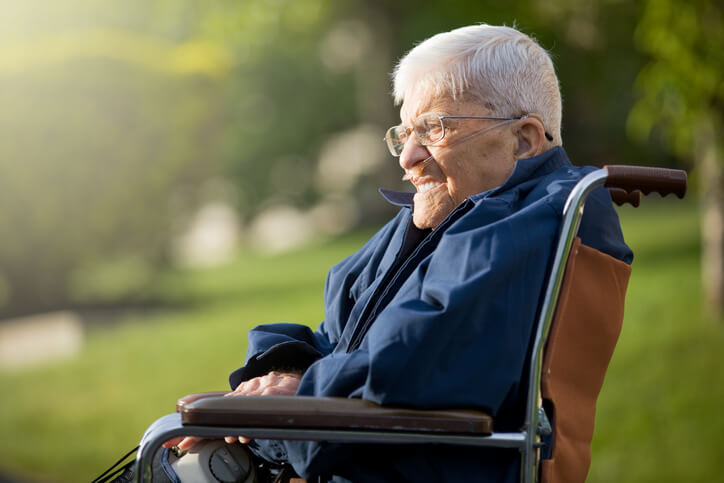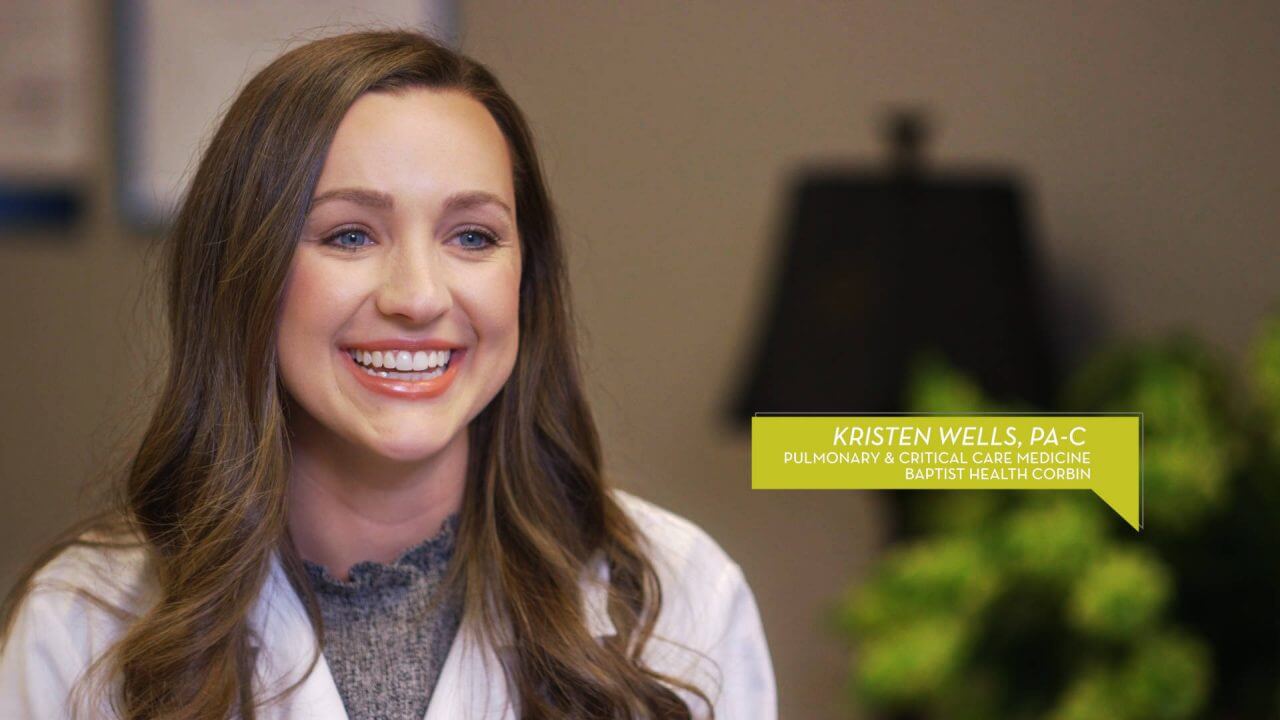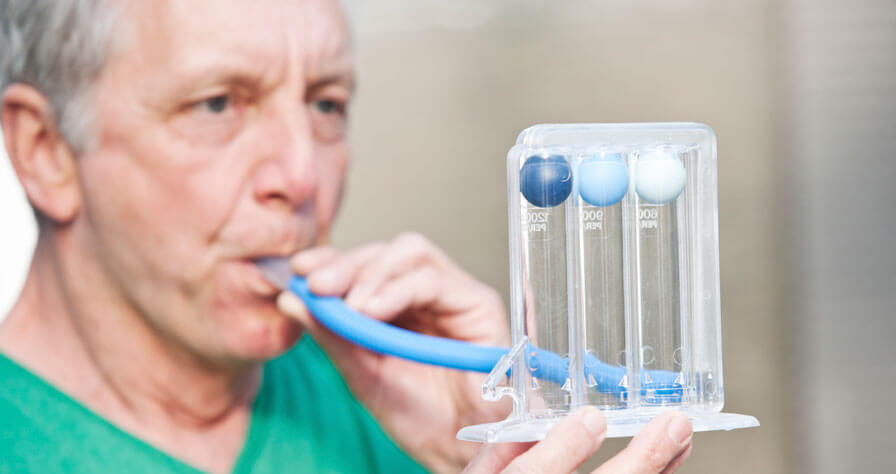What are the Stages of COPD?

Chronic obstructive pulmonary disease (COPD) is a group of progressive lung diseases. All of them can make you feel breathless. Doctors use stages to describe the severity of your COPD. This system, called the GOLD staging or grading system, determines what kind of treatment you’ll get. Below, we’ll outline the different stages of COPD and their symptoms.
Stage 1 (Mild COPD)
When COPD first appears, you may not know that you have a problem yet and you may continue with your daily activities. Mild symptoms may include:
- Minor breathing limitations
- Coughing
- Phlegm or mucus production
If you’re experiencing these symptoms, it’s important to talk with your doctor and work together to develop an individualized treatment plan.
Stage 2 (Moderate COPD)
During the moderate stage of COPD, you’ll notice more coughing and mucus production. You’ll also experience limitations in breathing and increased symptoms, such as:
- Feeling tired
- Shortness of breath that makes common activities hard
- Trouble sleeping
- Wheezing
- Forgetfulness, confusion, or slurred speech
During this stage, daily activities are affected, which is when most people go to the doctor. Your doctor may prescribe bronchodilators to help you breathe better. Your doctor may also recommend pulmonary rehabilitation, which combines exercise, education, and support to help you learn how to breathe and function better.
Stage 3 (Severe COPD)
Stage 3 or severe stage COPD greatly impacts your quality of life. Lung function continues to decline and breathing becomes more difficult. You’ll experience intensified shortness of breath, coughing, and tiredness as well as more frequent flare-ups. Other symptoms that appear in severe COPD include:
- Getting colds more often
- Tightness in your chest
- Swelling in your ankles and feet
- Trouble catching your breath
- Breathing issues when you exert yourself
Even though your symptoms may have gotten worse, it’s important to stay active and pursue a healthy lifestyle to help minimize COPD’s progression. If you haven’t already completed a pulmonary rehabilitation program, ask your doctor for a referral. Pulmonary rehabilitation is one of the most effective treatments available for alleviating your symptoms.
Stage 4 (Very Severe COPD)
Stage 4 COPD is classified as very severe and often affects your quality of life profoundly. During this stage, flare-ups and breathing issues can become life-threatening. Some of the symptoms of stage 4 COPD include:
- Crackling sound when you breathe in
- Barrel chest
- Constant wheezing
- Being out of breath for a very long time
- Delirium
- Irregular heartbeat
- Fast resting heartbeat
- Weight loss
- High blood pressure your pulmonary artery
At this stage, your doctor may add to your existing treatment plan. By stage 4 COPD, also called end-stage COPD, you may have trouble getting enough oxygen. Low oxygen levels can lead to serious health conditions like hypoxia, cyanosis, and other problems. If your oxygen levels are getting low, your doctor may prescribe oxygen therapy to make sure your body gets enough oxygen.
Can You Prevent Stage 4 COPD?
It depends on how advanced your COPD is and how well you respond to treatment. No two people are the same. By making lifestyle changes and taking advantage of the medical services described above, you may be able to prevent or postpone advancements in COPD.
If you believe your or a loved one has COPD or would like to learn more about treatment, contact your nearest Baptist Health location today.
Useful Resources and Next Steps:
Emphysema vs. Chronic Obstructive Pulmonary Disease (COPD)
Managing COPD Symptoms & Treatment in Corbin
COPD and Common Risk Factors
Types of Lung Function Tests



